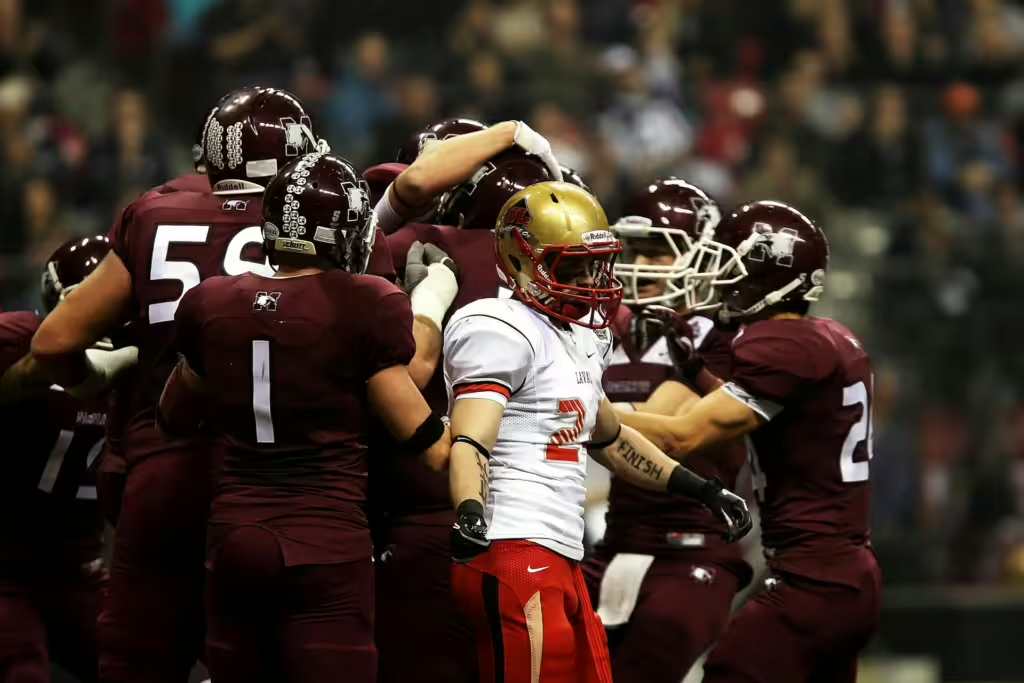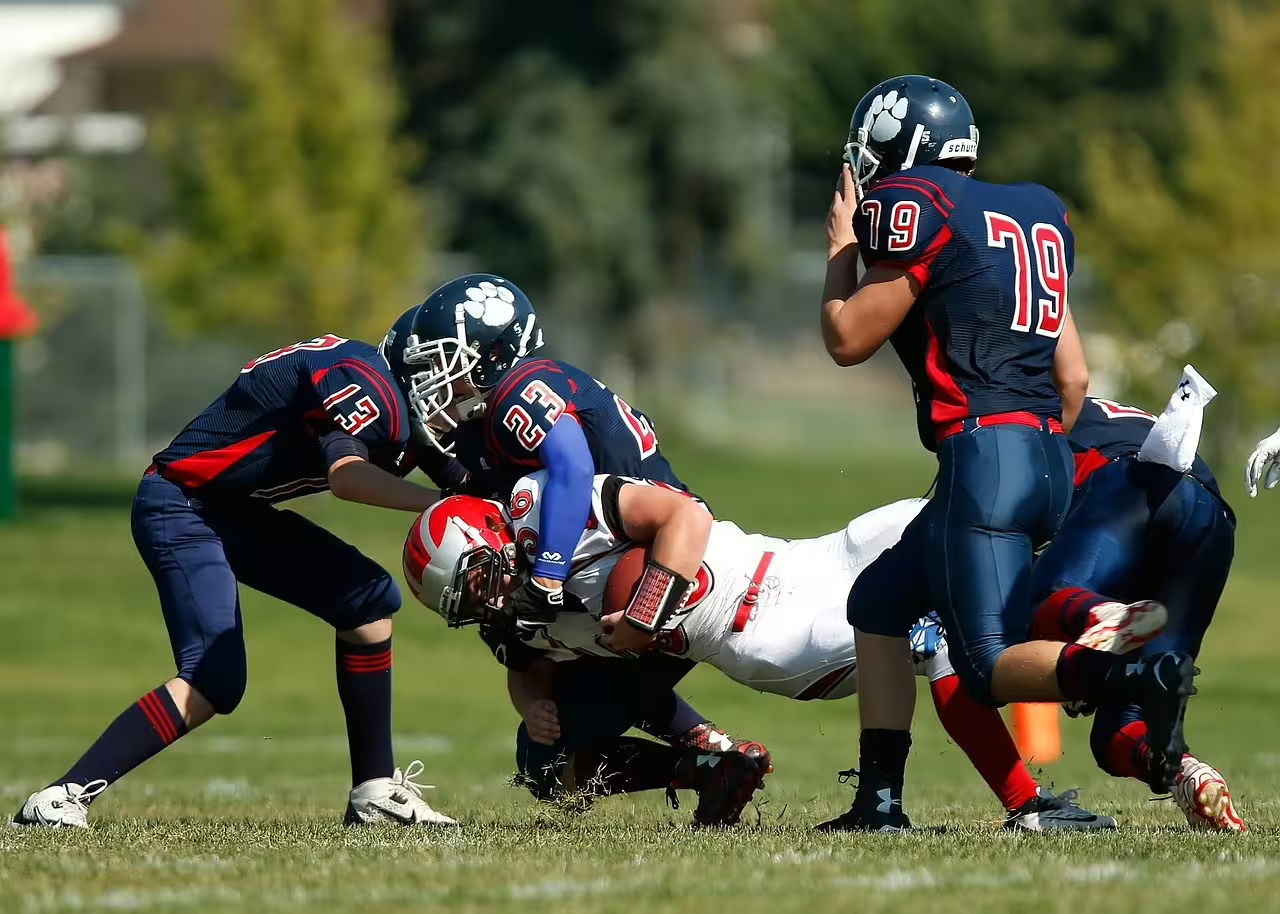For many young athletes, the sports experience is little more than a hobby, something to do on the weekends or to fill one’s after school hours. As a child grows, however, and as their talent for a sport begins to develop, parents may begin to realize that this “hobby” has the potential to be so much more. Added skill means additional opportunities for advancement. There is suddenly a chance to join a travel team, move up to varsity, and maybe even play for a college team!
In these situations, many parents will find themselves wondering what they should do next. If they weren’t sports kids themselves, they may not know what the path forward should be or what steps need to be taken to get their kids onto the next level of youth sports competition. The most prevalent question is often: Should my child stick with high school sports, move to a competitive club program, or aim even higher, for college athletics?
In this article, we will discuss the pros and cons each level—high school, club, and college sports. As we do, we will examine rewards, challenges, and expectations for each. Our goal is to give parents the tools they need to properly navigate each transition, allowing them to make informed decisions that will aid in their child’s success and keep the love of the game at the forefront of their thoughts.

The High School Experience
Those of us who have had the pleasure of playing high school sports understand that they are about far more than trophies. High school sports represent a huge social stepping stone for many teens. Some people might think that this is the time to win trophies, but truth be told, high school sports is more about belonging than anything else. Teen athletes are happy to represent their school and proud to be a part of a community. They play alongside their fellow classmates, play in front of teachers and friends, and find a sense of connection and purpose. For many teens, this is where their true lessons in teamwork, discipline, and leadership begin.
At the same time, many students find mentors in older students or coaches. They learn to strike that balance between commitment to sports and academic pursuits. Local games enable them to be a meaningful part of their community and to engage with sports in a way that transcends weekend practice or leisure time. That said, not all high school sports programs are the same. Indeed, many high school programs vary widely in quality.
What we mean by this is that, where some schools have elite coaching and facilities; others struggle to find funding even for team uniforms. At the same time, the level of competition also varies. Geography and school size are big factors in both cases. Seasons also vary depending on location and seasonal norms. But by and large, high school seasons are short—often just a few months. This often equates to limited practice time and fewer games. None of these factors would be bad, in and of themselves, but for athletes with serious college sports aspirations, they can prove somewhat problematic.
What Are Club Sports?
The next type of teen sports your child might encounter are club sports. These programs are sometimes referred to as travel or select teams and they are designed for athletes seeking more advanced forms of play. Club sports teams recruit all over the world. They will even recruit from different cities and across states, bringing together the most skilled players to form a team.
It should be noted that practices for these clubs are more intense than those at lower, less competitive levels. Seasons also tend to run longer. Nevertheless, club sports tournaments often attract college scouts and recruiters, making them ideal for teens with an eye for college sports. There is also more chance that these recruiters will notice your child with the added frequency of sports tournaments and events. Sports clubs also offer specialized coaches with experience in collegiate backgrounds. These individuals tend to know quite well how best to use your child’s talents.
There are challenges involved with club sports, even with all the benefits. Expense is a big part of it all. Not only can travel be extensive and require long weekends away from home, but fees for uniforms, tournaments, and coaching can add up pretty quickly. We’re talking potentially thousands of dollars per year. Then there is the added time commitment on yours and your child’s part, that can interfere with academics and social lives.
It should also go without saying that the competitive atmosphere at a sports club or travel team can be more than a little intense. Now, not all clubs are created equal, but many will prioritize winning and notoriety over fun, every time. In any case, parents should be careful to vet these programs carefully and check the coaches’ credentials before enrolling their child. If you’re making the investment of time, money, and your child’s well-being, you want to be sure that growth and balance is weighed into the options.
Balancing High School and Club Commitments
Many parents opt to have their young athletes try to do both—playing for their school during the academic year and joining club teams in the off-season. And while this can often provide benefits from either, the overlap between seasons has been known to cause the occasional scheduling conflict. The trick here is to not put too much on your young athlete’s plate so that neither school, nor sport, nor personal committments suffer in the bargain.

The Jump to College Athletics
Eventually, though, college begins, but not all college sports are the same. Indeed, there are several college sports divisions that parents need to be aware of as their child gears up to make the shift.
- NCAA Division I: These schools are the most competitive and demanding of the bunch. Athletes in this division often receive scholarships, train year-round, and balance rigorous travel schedules.
- NCAA Division II: Though not as competitive as Division I, this level is still highly competitive, albeit with slightly less pressure and more care given to balance the academic side of things.
- NCAA Division III: DIII schools shift the focus to academics first and athletics second. Nevertheless, they have strong athletic programs.
- NAIA and Junior Colleges: These institutions are often viewed as stepping stones for development, especially for athletes seeking to improve before transferring to a four-year school.
Recruitment Realities
We have covered it in several articles already, but the truth of the matter is that recruitment isn’t as simple as performing well in a handful of games. College coaches and scouts are not only looking for consistent performance, they are actively seeking students with good grades, good attitudes, and good character. The best coaches value communication, maturity, and a strong work ethic just as much as they do statistics; and each one of these metrics is important to getting your child into the right college sports program.
In addition, parents must remember that very few athletes receive full-ride scholarships based on these factors; and certainly never based purely on ability. That said, many programs offer partial scholarships or academic aid packages to those who match some criteria but fall short financially.
The Parental Role
In all of this, parents sometimes feel a certain pressure of their own. They want to “get it right” just as badly as their young athletes. But just like their children, parents may find themselves waylaid by club fees, scheduling conflicts, recruitment pressure, and far-flung dreams of sports scholarships. For good or ill, these all amount to a process that can sometimes feel like it’s more trouble than it’s worth. In the end though, your job as a parent is to help them feel supported, not solve all their problems for them.
In the vein, your role is to guide them, not steer them. Explain their options and help them to explore those options but let them decide which they prefer. Sure, you may know which is mire realistic, affordable, and reasonable, but all you can do is help them manage their dreams…you can’t control them; nor should you! To that end though, try and manage yours and their expectations. Keep perspective on things and reign in your ideas that they will become world-famous pro athletes. They may yet! But try not to bank on such dreams.
Finally, understand that you don’t have to navigate this confusing sports world on your own. There are many individuals and organizations in your child’s life that can offer meaningful guidance and direction, including:
- High school athletic directors
- Club program directors
- College recruiting consultants
- NCAA Eligibility Center resources
Using any or all of the tools available to you will not only prevent last-minute surprises in the college application process, it will help take some of the load off your already harried mind!

Cultured Athlete Says…
As you can see, there is no easy transition that exists when moving a child up through the competitive world of youth sports, but knowing the different paths beforehand certainly makes that transition that much easier. In the end, this isn’t a matter of chasing success—it’s about finding the right fit for your child’s personality, finding the path that aligns with their goals, and keeping a love of the game alive and well. Every step of the process is going to present your child with a new rhythm, a new community, and a new set of challenges, but with the right tools in place, they will be able to navigate these potential pitfalls with aplomb.
No matter which path you choose together, keep in mind that the best path forward is the one that keeps your child growing, learning, happy, and healthy. Even at higher levels, sports needn’t be only about scholarships and statistics, but should allow your child to enjoy their fleeting time doing something they love.
Discover more from CulturedAthlete
Subscribe to get the latest posts sent to your email.






